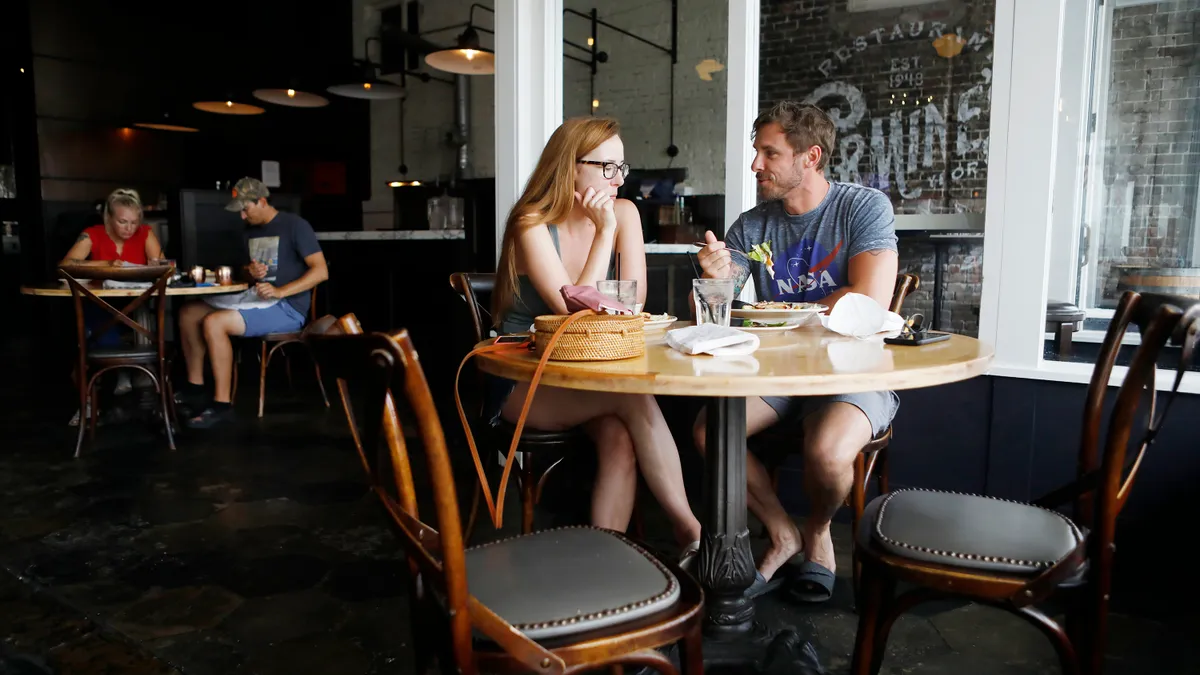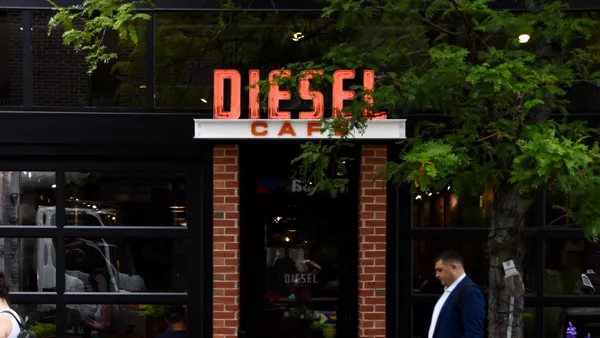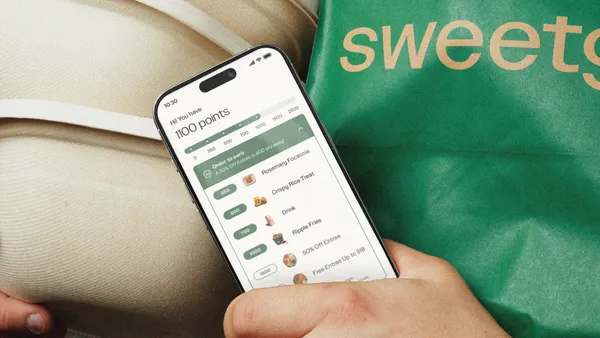Dive Brief:
- Descriptions of inflationary experiences in consumer Yelp reviews were higher in 2021 than ever before, increasing 29% from Q4 2020 to Q4 2021, per a new Yelp report.
- Despite inflation, Yelp's data shows an increase in searches for higher-priced businesses in 2021 compared to pre-pandemic searches. Searches for businesses at the highest price point on the platform increased by 56% in 2021, while searches for the lowest price-point businesses on the platform decreased by 24%.
- In 2021, inflation reached its highest level since 1982 and consumer prices jumped 7%. In the foodservice category, limited-service restaurants were hit the hardest by inflation, with prices up nearly 8%. Full-service meals were up 6% over 2020.
Dive Insight:
Consumer interest in premium concepts despite 39-year inflationary highs may give restaurant owners a sense of optimism, and could ease operator concerns about raising menu prices to offset rising food costs.
Food inflation is hurting grocery stores as well as restaurants. According to the Department of Labor, food-at-home prices rose 6.5% in December year-over-year, compared to 6% for eating away from home.
But in the fight over consumer food spend, restaurants may have an advantage thanks to pent-up dining demand after two years in which many consumers have chosen to eat at home more regularly.
Restaurants can also manage cost pressures by getting creative with their menus. Domino's, for example, is cutting the number of chicken wings from 10 to eight for its $7.99 carryout deal, while Little Caesars raised the price of its $5 Hot-N-Ready pizza to $5.55 while adding more pepperoni. Technomic Principal David Henkes told CNBC that some restaurants are prioritizing higher-margin promotions or using lower-cost ingredients.
These menu changes and the lower rate of inflation in the restaurant category versus grocery category may explain why Yelp's data shows most small business owners remain optimistic about their future. Restaurateurs have increased openings as well. Last year brought a 10% year-over-year increase in new restaurant and food business openings, according to Yelp.
Despite consumer willingness to pay higher prices, the restaurant industry still faces considerable challenges. The omicron COVID-19 variant has dampened recovery in the industry and caused sales declines and store hour reductions. A National Restaurant Association survey found more than three quarters of operators feel business conditions are worse now versus three months ago.
Still, consumer spending has an upper limit, and the industry may be getting close to it. The child tax credit recently ended, drying up some extra cash for some families, and many other stimulus programs have expired. New data from Black Box Intelligence shows consumers are questioning the value of restaurant meals.













